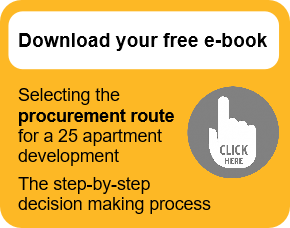Traditional procurement method
Contents[hide] |
[edit] What is the traditional procurement route?
The traditional procurement route involves separating design from construction. The client first appoints consultants to design the project in detail (and often to ensure cost control and inspect the construction works as they proceed), and a contractor is then appointed for the construction of the project on a single-stage competitive basis.The contractor’s responsibilities include workmanship, materials and work undertaken by suppliers and subcontractors. They are not responsible for the design (other than temporary works), although some traditional contracts may allow the contractor to design specific parts of the works.
Traditional procurement is typically undertaken under a lump sum contract. A single ‘lump sum’ price for all the works is agreed before the works begin, then stage payments are made as the works proceed. This is appropriate where the project is well defined when tenders are sought, and significant changes to requirements are unlikely. This allows the contractor to accurately price the works they are being asked to carry out.
[edit] How popular is the traditional procurement route?
Traditional procurement remains the most commonly-used method of procuring building works.
The National Construction Contracts and Law Report 2018, published by NBS, suggested the following mix of procurement routes in the construction industry:
- Traditional procurement 46%
- Design and build 41%
- Partnering / alliancing 3%
- Construction management 3%
- Contractor approved without any tender process 2%
- Measured term 1%
- PFI / PPP 1%
- Cost plus 1%
- Management contracting 1%
For more information see: What is the most common procurement route?
[edit] When is the traditional procurement route appropriate?
The traditional procurement route is generally suitable where the client wishes to retain control over decisions relating to the design and quality of the project. However, a full package of detailed information is required before a contractor can be appointed, and this can make it slower and more expensive than some other forms of procurement. It also means that the contractor is not involved in the design decisions, and so it can result in issues with buildability.
[edit] What are the key characteristics of the traditional procurement route?
Key characteristics of traditional procurement include:
- Consultants retaining control over design and quality. This may result in a higher standard of project than some other procurement routes.
- Consultants are responsible for valuations and agreeing payments.
- The contractor generally has no design duties, but where this is necessary for some aspect of a project, the contract should include clear wording to this effect.
- There must be adequate time before tenders are invited to allow for the production of a complete set of drawings and other documents. This means the traditional procurement route may be slower than some other routes.
- Contractors may submit claims if they do not receive the timely instructions and information, or if changes are made.
- The traditional method – or adaptations of it – can be used with approximate quantities, provisional sums or cost reimbursements where the nature or quantity of work cannot be accurately defined.
For further information see Traditional contract for construction.
For other methods see: Procurement routes.
[edit] Related articles on Designing Buildings
- Appointing consultants.
- Bill of quantities.
- Construction contract.
- Contract conditions.
- Contractor.
- Notifications during construction works
- Procurement route.
- Temporary works.
- Tender.
- Tender documentation.
- Traditional contract for construction
- Traditional contract: outline work plan.
- Traditional contract - pros and cons.
- Two-stage tender.
- Variations.
Featured articles and news
Gregor Harvie argues that AI is state-sanctioned theft of IP.
Many resources for visitors aswell as new features for members.
Using technology to empower communities
The Community data platform; capturing the DNA of a place and fostering participation, for better design.
Heat pump and wind turbine sound calculations for PDRs
MCS publish updated sound calculation standards for permitted development installations.
Homes England creates largest housing-led site in the North
Successful, 34 hectare land acquisition with the residential allocation now completed.
Scottish apprenticeship training proposals
General support although better accountability and transparency is sought.
The history of building regulations
A story of belated action in response to crisis.
Moisture, fire safety and emerging trends in living walls
How wet is your wall?
Current policy explained and newly published consultation by the UK and Welsh Governments.
British architecture 1919–39. Book review.
Conservation of listed prefabs in Moseley.
Energy industry calls for urgent reform.
Heritage staff wellbeing at work survey.
A five minute introduction.
50th Golden anniversary ECA Edmundson apprentice award
Showcasing the very best electrotechnical and engineering services for half a century.
Welsh government consults on HRBs and reg changes
Seeking feedback on a new regulatory regime and a broad range of issues.
CIOB Client Guide (2nd edition) March 2025
Free download covering statutory dutyholder roles under the Building Safety Act and much more.


























Comments
[edit] To make a comment about this article, or to suggest changes, click 'Add a comment' above. Separate your comments from any existing comments by inserting a horizontal line.